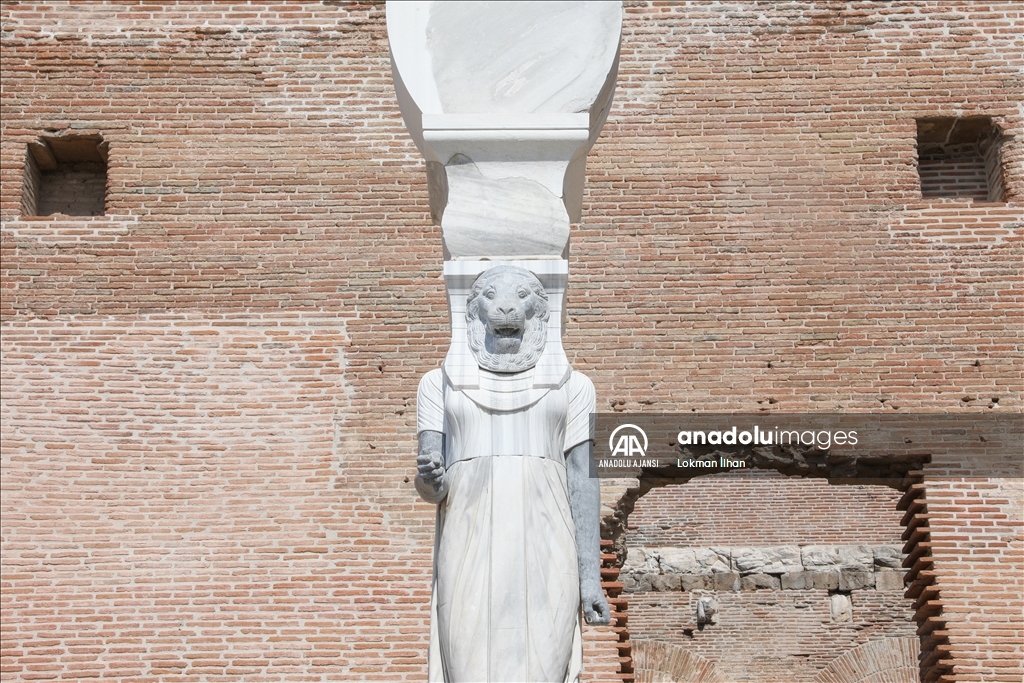Kızılavlu is a large structure located in the city of Bergama, outside the Acropolis. It is a sacred area dedicated to Egyptian deities, particularly Serapis, who was identified with Zeus. The tripartite form of the building indicates worship not only of Serapis but also other gods such as Isis and Harpocrates. Although the exact founder of the temple is unknown, it is generally dated to the 2nd century AD, during the reign of Roman Emperor Hadrian (117–138 AD).

Kızılavlu (Türkiye Kültür Portalı)
Architectural Features
Kızılavlu features a front courtyard approximately 260 by 110 meters in size. The temple itself is designed as a three-aisled basilica with an apse. The entire structure is built of red bricks measuring 35 by 40 centimeters with a thickness of 6 centimeters. Symmetrical round towers flank the building on both sides, and the courtyards are surrounded by colonnaded galleries. The front courtyard is situated above water tunnels built over the Selinus River.
At the front of the temple, aligned with its axis, there is a propylon (entrance gateway) and a large temple door framed with marble moldings; its large wings were covered with bronze. The sanctuary inside was illuminated only from the front by windows, while the rear part was left semi-dark.

Kızılavlu (Anadolu Ajansı)
Religious Function and Use
The temple was dedicated to the cult of the Egyptian god Serapis, where water played an important symbolic role in religious ceremonies. Pools inside the temple were fed by hot and cold water pipes and are thought to have been used for ritual purification. In the rear section, two tall pedestals likely supported a colossal cult statue about 10–12 meters high. Below this statue, there were cisterns and secret passages that facilitated the priests' use during ceremonies.
Byzantine Period and Later
During the Early Byzantine period, architectural additions were made, and the building was converted into a basilica-plan church. It became one of the seven early churches in Anatolia. The round tower structure on the north side was used as a mosque during the Ottoman period and today serves as the Kurtuluş Mosque.


